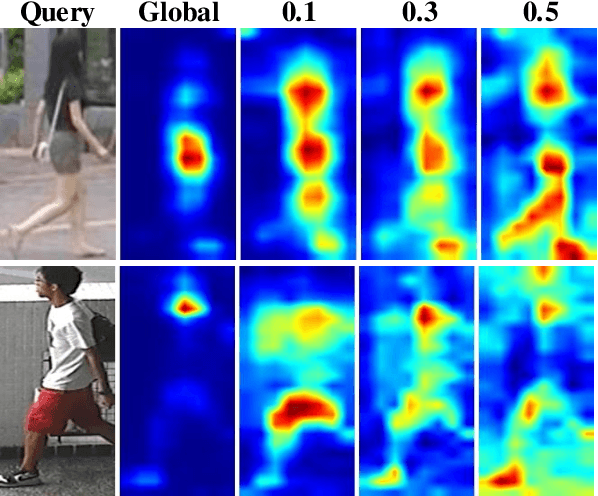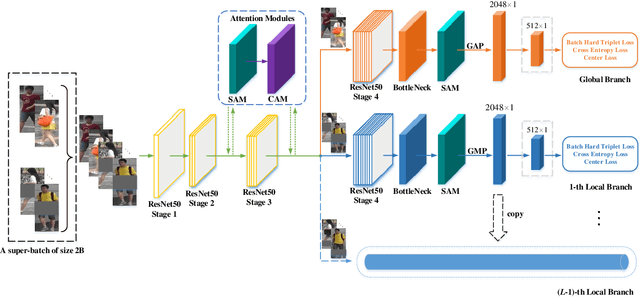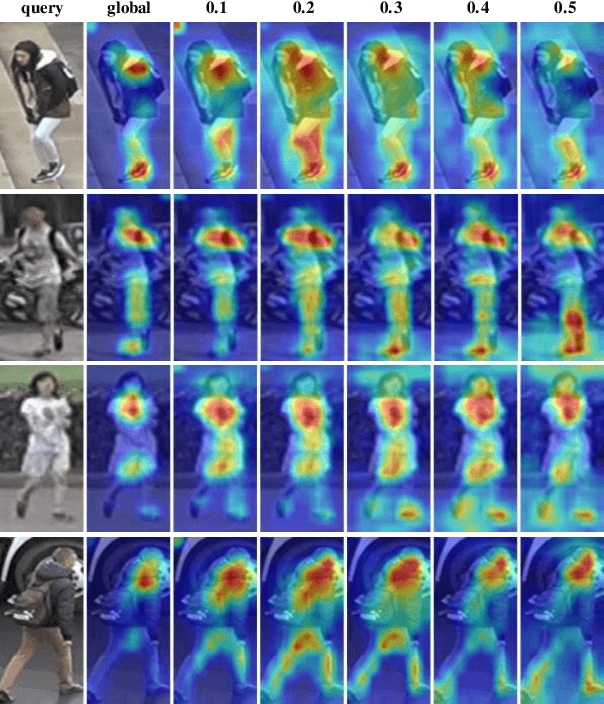Ben Xie
Diversity-Achieving Slow-DropBlock Network for Person Re-Identification
Feb 09, 2020



Abstract:A big challenge of person re-identification (Re-ID) using a multi-branch network architecture is to learn diverse features from the ID-labeled dataset. The 2-branch Batch DropBlock (BDB) network was recently proposed for achieving diversity between the global branch and the feature-dropping branch. In this paper, we propose to move the dropping operation from the intermediate feature layer towards the input (image dropping). Since it may drop a large portion of input images, this makes the training hard to converge. Hence, we propose a novel double-batch-split co-training approach for remedying this problem. In particular, we show that the feature diversity can be well achieved with the use of multiple dropping branches by setting individual dropping ratio for each branch. Empirical evidence demonstrates that the proposed method performs superior to BDB on popular person Re-ID datasets, including Market-1501, DukeMTMC-reID and CUHK03 and the use of more dropping branches can further boost the performance.
Learning Diverse Features with Part-Level Resolution for Person Re-Identification
Jan 21, 2020



Abstract:Learning diverse features is key to the success of person re-identification. Various part-based methods have been extensively proposed for learning local representations, which, however, are still inferior to the best-performing methods for person re-identification. This paper proposes to construct a strong lightweight network architecture, termed PLR-OSNet, based on the idea of Part-Level feature Resolution over the Omni-Scale Network (OSNet) for achieving feature diversity. The proposed PLR-OSNet has two branches, one branch for global feature representation and the other branch for local feature representation. The local branch employs a uniform partition strategy for part-level feature resolution but produces only a single identity-prediction loss, which is in sharp contrast to the existing part-based methods. Empirical evidence demonstrates that the proposed PLR-OSNet achieves state-of-the-art performance on popular person Re-ID datasets, including Market1501, DukeMTMC-reID and CUHK03, despite its small model size.
 Add to Chrome
Add to Chrome Add to Firefox
Add to Firefox Add to Edge
Add to Edge